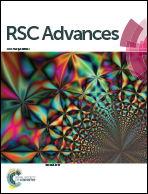Investigation of efficient protocols for the construction of solution-processed antimony sulphide solid-state solar cells
Abstract
Antimony sulfide solar cells have been studied with the purpose to investigate an easy and efficient procedure of antimony sulfide deposition on mesoporous titania films. Two principal deposition methods have been studied based on different sulfur precursors (thiosulfate vs. thiourea) and chemical bath vs. spin-coating deposition. The two approaches led to the same practical effect thus highlighting spin-coating deposition using antimony chloride and thiourea as the simplest and most practical method of construction of antimony sulfide/titania photoanodes. Poly(3-hexylthiophene) was employed as a hole-transporter while PEDOT:PSS and Ag were used as the counter electrode. They were all deposited under ambient conditions. XPS measurements provided information about antimony sulfide stoichiometry while UPS measurements gave the ionization potential in each case. Both deposition methods led to sulfur-deficient antimony sulfide.


 Please wait while we load your content...
Please wait while we load your content...